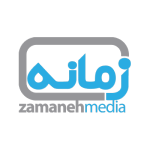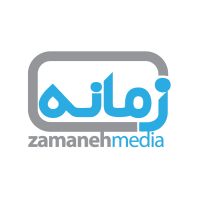Mohammad Eqbal was a construction worker who didn’t have enough money to take a cab to Friday prayer, forcing him to walk twelve kilometers from his house to the mosque. That’s when he was killed by a bullet that hit him from behind.
On the afternoon of Friday, September 30, horrifying pictures shared from Zahedan left everyone in disbelief. The blood-soaked bodies of the worshipers were lying on top of each other in Makki Grand Mosque in Zahedan as the continuous sound of war bullets blared overhead, leaving our shocked eyes wishing these images were not real.
The government killing of Zhina (Mahsa) Amini and the news of the alleged rape of a 15-year-old Baloch girl by the police chief of Chabahar triggered a protest in Zahedan on September 30. On that day which later became known as the “Bloody Friday” of Zahedan, security forces fired at protesters with lethal weapons. According to Baluoch media reports, including “Halvash,” at least 101 citizens, including 14 children, were killed in the crackdown.
Mohammad Eqbal Shahnawazi Nayebzehi, a 16-year-old Baoch child laborer without a birth certificate, is one of the victims of Bloody Friday in Zahedan. A source who is a close relative of Mohammad Iqbal shared the details of his killing with Zamaneh.
Mohammad Eqbal, who worked for his older brother, started his challenging and exhausting day as a construction worker around 9am.
According to Zamaneh’s source, Mohammad Eqbal went to Makki Grand Mosque that day to complete his Friday prayers.
“The kid used to pray regularly and go to the “Friday prayer” every Friday, like thousands of other Baloch people…That day, the poor kid did not have a taxi fare and went by foot. The distance between the Sunni’s Friday prayer and the house of Mohammad Eqbal’s father is more than twelve kilometers… People were at the end of the praying ceremony when the plainclothes militia (associated with the government) attacked the police station to entice the prayers to attack. They yelled ‘Allahu Akbar’ and soon they realized they could not deceive people so they started shooting from heights where they (the forces) had a full view into the mosque, and a bullet hit Mohammad Eqbal from behind…” the source told Zamaneh.
During these shootings, a bullet hit Mohammad Eqbal from behind, rupturing his heart as it exited his chest.

According to the source, Mohammad Eqbal was hit by a war bullet, however, they did not have further knowledge of the weapon used. The source based this on the observation of the grand size of the hole left in the body of the teenager:
“It left a big tear in the kid’s chest and heart which looked like a round hollow glass. You could easily see inside his body. When the people around us saw the body of our martyr, they guessed that the weapon was probably Heckler & Koch G3 (Gewehr 3) or SKS or a vz. 24 rifle…”
Someone called Mohammad Eqbal’s family and informed them that their son had been killed in the mosque. Mohammad Eqbal died on the spot due to the severity of his injuries:
“After this call, one of Mohammad Eqbal’s brothers frantically called his other brother who was confused and shocked as he had received another call from someone with the same news about Mohammad Iqbal. Mohammad Iqbal’s brothers and father went to the mosque on a motorcycle, their only means of transportation. They are workers and economically poor. His father and two brothers went to the street leading to the mosque where they were shocked by the scenes. They were praying that Mohammad Eqbal had escaped from there and was on his way home because his friends who were with him said they ran away and never saw Mohammad Eqbal again. All the people in the family started to look for Mohammad Eqbal. We visited all the hospitals in Zahedan and Makki Mosque because many martyrs were taken inside the mosque.
We left in a hurry. The whole city was in chaos, the security forces were shooting and war helicopters were flying at very low heights. When we got near the Makki Mosque, we noticed that some people wearing Baluchi clothes were shooting at the people…We might have been killed too. They shot several young people, including a lady nearby the mosque in front of our eyes. The crowd was about fifty meters away from us. Iqbal’s family had to call a family member to bring his car to take Mohammad Eqbal’s body to the hospital.”
Zamaneh’s source says that the family of Mohammad Eqbal did not know about the shooting of the worshipers until they reached the Makki Grand Mosque and thought that he was probably killed in a clash by mobs.
“One of Mohammad Eqbal’s brothers separated from us and went into the shooting scene. His father was worried and urged him not to go, saying he didn’t want to lose another son, but he went and reached the entrance of Makki Mosque anyway. They were firing tear gas…When his brother entered the mosque, he was faced with the mass of martyrs’ bodies and the lifeless body of our little Mohammad Eqbal, which was covered in blood. Makki’s cleric prevented filming and said not to take the martyrs out of the mosque,” the source added.
At first, the clerics did not allow Mohammad Eqbal’s family to remove his body from the mosque and insisted on waiting until Molavi Abdul Hamid, the Imam of the Zahedan congregation, saw the corpse. The family objected: “The family was at the peak of anger and said whatever came out of their mouths. In the end, they took a video, and we removed the martyr Mohammad Iqbal from the mosque with the family after two hours… They said their hearts were bleeding.”
With persistence, the family moved the lifeless and bloody body of Mohammad Eqbal to Khatam-al-Anbia hospital in Zahedan, but they encountered heavy traffic on the way:
“I also joined them in the middle of the road. One of his brothers got out of the car in the middle of the street and rushed to the hospital’s emergency room. Everything was like a dream or a Hollywood movie because the hospital floor was full of blood and corpses. Wounded people were lying on the hospital floor, and there were very few beds available, full of wounded people who had been shot in different parts of their bodies.”
The family was frantically wandering with the wounded body of Mohammad Iqbal for nearly an hour amid the crowded hospital. Because of the tense environment, they got into verbal conflicts with many people.
Mohammad Eqbal’s family finally transferred the child’s body to his father’s house because they worried security forces might kidnap it. They kept the body in the living room for 24 hours:
“We did not hand over the bodies of our martyrs to the hospital and morgue because all the families of the martyrs were afraid that the government would take the bodies of their loved one’s hostage. The whole family was also present. Even though the weather was cold that night in Zahedan, we put Mohammad Eqbal’s body in front of the strong and freezing wind of the air conditioner. At night, we sent some people to prepare the grave in a small cemetery outside the city of Zahedan so that we could bury the child in the morning,” the source told Zamaneh.
In the morning, after numerous calls to Basij forces and high-ranking Basij people from different Baloch tribes familiar with Mohammad Iqbal’s family, they managed to get permission for the burial:
“The Basijis said to bury him, but to not make a fuss and to carry out the ceremony in silence.”

The body of Mohammad Eqbal Shahnawazi Nayebzehi was finally buried on Saturday, October 1, without a death certificate. According to this well-informed source, all the families of Zahedan’s Bloody Friday victims buried their loved ones quickly without an autopsy due to the fear that the bodies of their loved ones would be taken hostage and the threats directed to them.
Mohammad Eqbal Shahnawazi Nayebzehi was born in 2006 and was only 16 years old when he was killed.
According to a well-informed source, the forces that shot this Balخch child were undercover “plainclothes” soldiers who had been deployed for this operation by the government and were stationed in the mountains in front of the mosque and surrounding buildings.
“There is plenty of evidence that the forces were already prepared to carry out this crime and this sad scenario. The entire vicinity of the Friday prayer mosque was under full observation by snipers. They shot tear gas at thousands of worshipers and then started shooting. People panicked, went to the exit doors, and stormed to the police station, asking them why they had committed such a crime. Street witnesses also say that the people who were wearing plainclothes and chanting “Allahu Akbar” on top of the walls of the mosque had weapons. They came down from the wall of the mosque and went on the roof of police station number 16, ten meters away from the mosque. At first, people thought that these people were ordinary people, but the same people went over the wall of the police station wearing Baluchi clothes and began brutally shooting people,” Zamaneh’s source added.
Mohammad Iqbal’s older brother is a plasterer, whom he used to work with. Mohammad Iqbal worked in the heat of the summer and the cold of the winter from morning to afternoon for a salary of one hundred thousand Tomans (approximately 3 Euros).
“In the afternoon, he took the same hundred thousand Tomans to his father’s house and bought dinner and lunch. September 29, the last day of his work, one day before he was killed….”
Mohammad Eqbal had two brothers and five sisters, and his family has not been doing well after his death. His father has leukemia, and because of an accident he had in the past, suffers from a broken vertebra causing disability. After Mohammad Eqbal’s death, the deceased’s parents have become sensitive to the well-being of their other children, worried of what problems will come their way.
Zhina (Mahsa) Amini was a 22-year-old Kurdish woman who died after falling into a coma following her detention by morality police enforcing hijab in Tehran.
The protests against the government’s murder of Zhina (Mahsa) Amini started on Friday, September 16, after the medical team at Tehran’s Kasra hospital pronounced Zhina dead, shaping the first protests in front of Kasra hospital in Tehran. Protests continued after Zhina’s funeral in her hometown of Saqqez when mourners organized a peaceful rally outside the city’s governor’s office. Security forces outside the office responded to protestors with tear gas and opened fire. The protest spread in nearly all of Iran’s 31 provinces.
According to Iran Human Rights (IHRNGO), as of October 14, 2022, at least 201 people, including at least 23 children, have been killed in the recent nationwide protests across Iran.
Related Articles:








